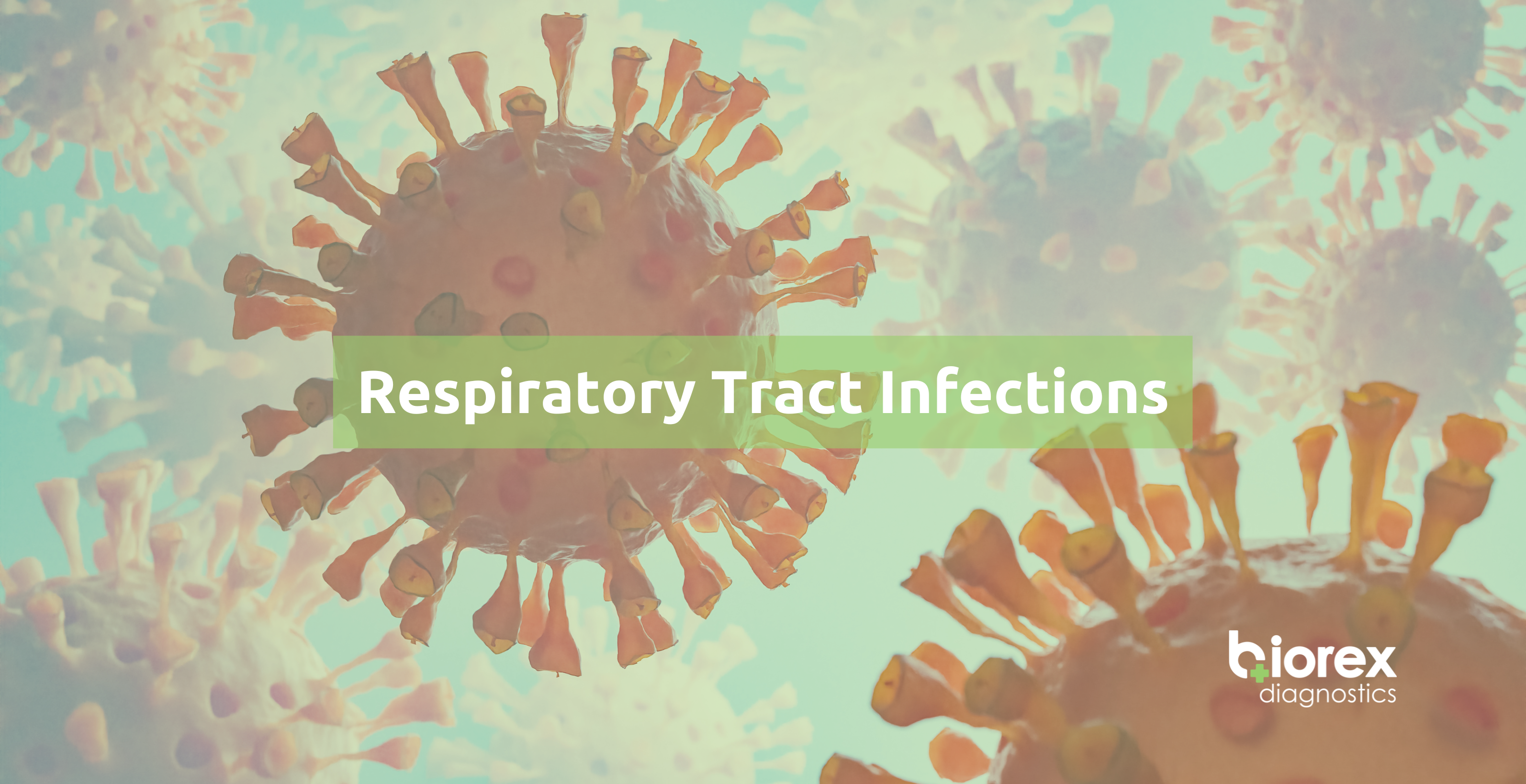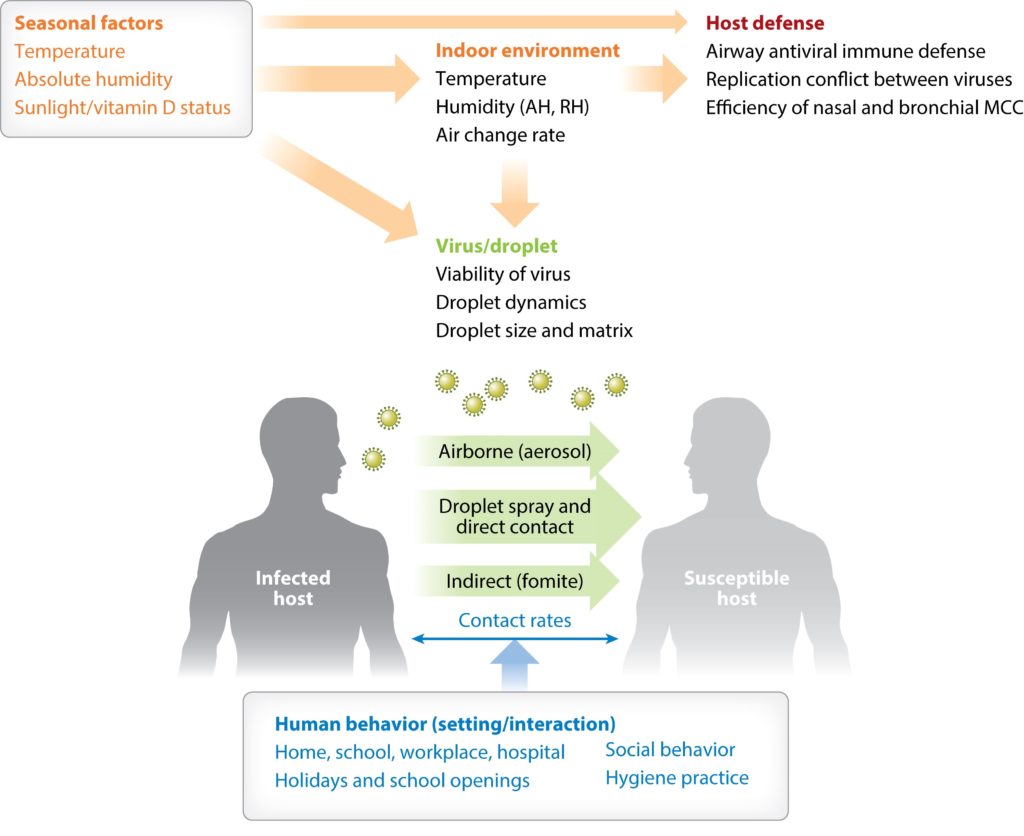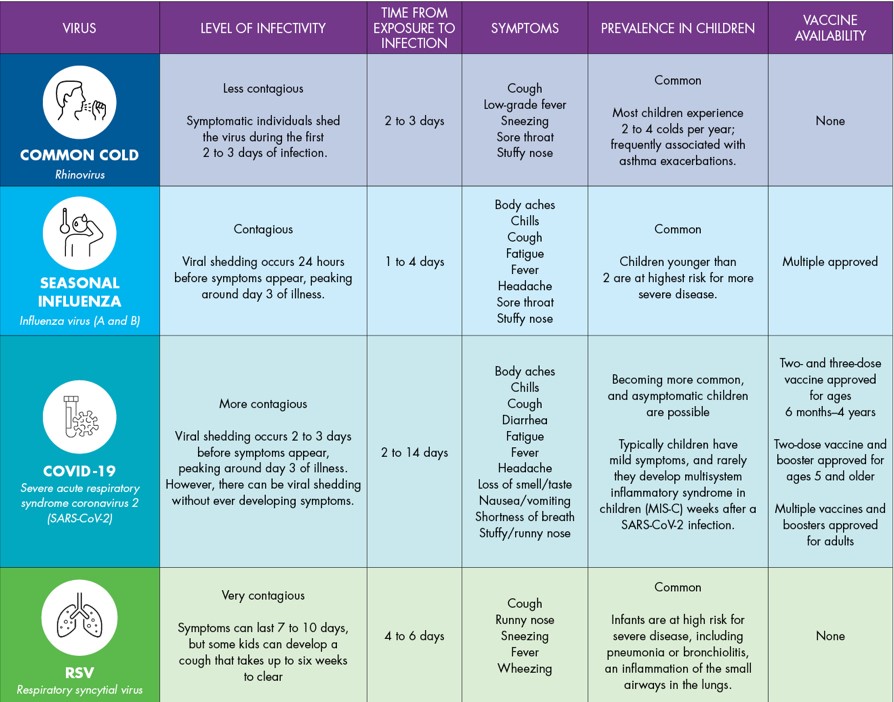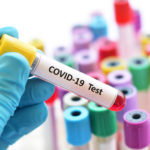
Respiratory Tract Infections
Respiratory Tract Infections
The winter season is now upon us here in the northern hemisphere. As with each winter season, respiratory tract infections (RTIs) have begun to emerge. RTIs are the leading cause of death in childhood and the fourth most common cause of death in adults. They truly are a global health concern 1.
Prevalence of RTIs
The first account of a winter respiratory infection epidemic was in 400BC in the ancient Greek record, “Book of Epidemics”, written by the Hippocrates. Since then, many respiratory viruses have been identified as the etiological agents of such epidemics. RTIs remain a significant public health challenge despite extensive efforts 2.
According to the World Health Organization, RTIs account for 6% of the global disease burden 3. The prevalence of these infections are notably high, and for susceptible populations (the young, elderly and immunocompromised), they can indeed lead to severe, and sometimes fatal consequences 1, 2. Annually, approximately 6.6million children under the age of five die worldwide, with a staggering 95% of these deaths occurring in low-income countries. Of this under-five mortality, one-third is attributed to acute respiratory infection (ARIs). This statistic underscores the disproportionate impact of respiratory infections on vulnerable populations in low-income regions 3. The severity of ARIs among young children is evident in healthcare utilisation statistics. ARIs are responsible for a substantial portion of visits to health facilities ranging from 30%- 50%, and contribute significantly to hospital admissions, accounting for about 20%-40% of hospitalisations among children under the age of five 3.
Countries such as Bangladesh, India, Indonesia, and Nepal collectively contribute significantly to the global burden of ARIs, accounting for about 40% of the total ARI mortality. These areas often face challenges related to healthcare access, sanitation, and socioeconomic factors, which exacerbate the impact of respiratory infections 3.
Moreover, certain viral epidemics, such as the severe acute respiratory syndrome coronavirus (SARS-CoV) outbreak in 2022-2003 and the more recent emergence of SARS-CoV-2 (COVID-19), have occurred during winter months. This pattern suggests that the winter environment may indeed facilitate the spread of various respiratory tract infections 2.
The reasons behind the heightened prevalence and transmission of respiratory viruses during winter months are multifactorial (see figure 1) 2.
Figure 1: Factors that affect respiratory virus transmission 2

Efforts to reduce the burden of RTIs in these vulnerable populations often involve strategies such as improving healthcare access, vaccination campaigns, promoting better hygiene practices, addressing environmental factors, and providing education and resources to caregivers and communities to prevent and manage these infections effectively. These efforts are crucial in reducing the morbidity and mortality associated with respiratory infections among young children, particularly in low-resource settings 3.
The Economic Burden
The economic burden associated with common viral RTIs like the cold and influenza is substantial. The estimated costs incurred in the US as a result of these infections annually are staggering: $40 billion for the common cold and over $87 billion for influenza. These costs encompass medical expenses, lost productivity, and other associated factors 2.
A study conducted in the Kingdom of Saudi Arabia (KSA) compared the economic burden associated with viral severe acute respiratory infections (SARIs) in patients based on the timing of their diagnosis (early versus delayed) for COVID-19, influenza during an epidemic, and respiratory syncytial virus (RSV). The study suggested that a delayed diagnosis led to a higher total economic burden compared to cases where the diagnosis was made earlier. This emphasises the significance of employing a broader diagnostic approach. In doing so, utilising approaches that allowfor the detection of multiple respiratory viruses simultaneously, such as multiplex PCR testing. By utilising a more comprehensive diagnostic method, healthcare providers can improve their ability to promptly and accurately identify the specific pathogens responsible for respiratory illnesses like COVID-19, influenza during an epidemic, and RSV. The earlier identification can potentially lead to more timely and targeted interventions, which could ultimately help reduce the economic burden associated with these infections 4.
COVID-19
Coronavirus disease 2019 (COVID-19) is an infectious illness caused by the severe acute respiratory syndrome coronavirus 2 (SARS-CoV-2). First identified in December 2019 in the city of Wuhan, China, COVID-19 has spread globally, leading to a pandemic as declared by WHO in March 2020. COVID-19 primarily spreads through respiratory droplets. Symptoms of COVID-19 range from mild to severe and has an incubation period of 12 to 14 days following exposure. However, some infected individuals may remain asymptomatic. Whilst symptoms of COVID-19 is similar to the flu, there are a few difference. See table 1 below for a comparison of COVID-19 symptoms with influenza and RSV. COVID-19 has had a significant impact on global health, economies, and daily life around the world, leading to widespread public health measures, including 5:
- testing 5
- vaccination campaigns 5
- mask-wearing 5
- social distancing 5
- quarantine protocols 5
These measures aid in controlling the spread of infection and mitigate the effects 5. As of 30th November 2023, globally there have been 772,052,752 confirmed cases of COVID-19, including 6,985,278 deaths since December 2019, highlighting the devastation of COVID-19 according to WHO 6.
Table 1: Comparison of Symptoms of Cold, Influenza, COVID-19 and RSV 7

Influenza
Seasonal influenza, commonly referred to as the flu, is an acute respiratory infection caused by the influenza viruses. It is a contagious respiratory illness affecting the nose, throat, and sometimes the lungs. Influenza viruses are classified into types A, B, C and D with types A and B causing seasonal flu outbreaks in humans. The flue is widespread and affects people worldwide, typically during the autumn and winter months in the northern hemisphere and the opposite months in the southern hemisphere, spreading easily from person to person through respiratory droplets. Whilst many recover from the flu without medical treatment, it can cause mild to severe illness and, in some cases, can lead to hospitalisation or even death, especially among the vulnerable populations, such as the young, elderly, pregnant and those with underlying health conditions. Symptoms of the flu are similar to that of COVID-19, but slightly differ (see table 1 above). Preventative measures can help reduce the spread of influenza and its associated complications 8.
Respiratory Syncytial Virus (RSV)
Respiratory Syncytial virus (RSV) is a common and highly contagious virus that primarily affects the respiratory tract. It was discovered more than 60 years ago is known to be a significant cause of lower respiratory infections (LRIs), particularly in infants and young children. RSV can also cause infections in older adults and individuals with weakened immune systems. RSV infections tend to occur seasonally, typically with an annual peak during specific times of the year. In tropical climates, they tend to peak during the colder months. This seasonality is observed in many regions and contributes to the pattern of RSV outbreaks. The symptoms of RSV infection can vary in severity, ranging from mild cold-like symptoms to more severe respiratory issues such as bronchiolitis (inflammation of the small airways in the lungs) and pneumonia. See table 1 above for a breakdown of RSV symptoms and how they differ from other RTIs. Preventative measures are vital to reduce RSV transmission. Moreover, efforts are underway to develop vaccines and therapies to prevent and treat severe RSV infections, particularly in high-risk populations 9.
Co-Infection
Co-infection with COVID-19, influenza, and RSV is possible, particularly during seasons when these viruses are circulating. The simultaneous presence of these respiratory viruses in an individual can potentially lead to more severe illness, complications, exacerbation of underlying health conditions, or prolonged recovery times. Preventative measures remains crucial in reducing the risk of infection and potential co-infection. As COVID-19, influenza and RSV share similar respiratory symptoms (see table 1), co-infection can make diagnosis and treatment more challenging as it isn’t possible to distinguish between them based solely on clinical presentation. Diagnostic tools are vital in RTI infection in ensuring accurate diagnosis and proper medical care and management to prevent adverse outcomes 10.
The Biorex RTI Testing Panel
Biorex offer several diagnostic tests for the diagnosis and monitoring of RTIs.
| Product Name | Catalogue Code | Product Type | No. of Tests |
| Influenza A+B & RSV PCR | MOLAB096 | Real-Time PCR | 96T |
| SARS-CoV-2 PCR | MC19PCR1 | Real-Time PCR | 96T |
| H1N1 PCR | MOLH1N96 | Real-Time PCR | 96T |
| Influenza & COVID-10 Ag Combo Rapid Test (Nasopharyngeal) | COVIC020 | Rapid Test | 20T |
| Influenza & COVID-10 Ag Combo Rapid Test (Nasal) | COVICN20 | Rapid Test | 20T |
| COVID-19 IgG/IgM Rapid Test Cassette (Whole Blood/Serum/Plasma) | COVID010
|
Rapid Test | 10T |
| COVID-19 IgG/IgM Rapid Test Cassette (Whole Blood/Serum/Plasma) | COVID020 | Rapid Test | 20T |
| Coronavirus Ag Nasal Swab Rapid Test | COVNS020 | Rapid Test | 20T |
| COVID-19 Total Antibody | BXE0882A | ELISA | 96T |
| COVID-19 IgM Antibody | BXE0883A | ELISA | 96T |
| SARS-CoV-2 Neutralising Antibody (IgG) Antibody | BXE0885A | ELISA | 96T |
References
- Hakansson AP, Orihuela CJ, Bogaert D. Bacterial-Host Interactions: Physiology and Pathophysiology of Respiratory Infection. American Physiological Society 2018; 98(2). https://journals.physiology.org/doi/epdf/10.1152/physrev.00040.2016 (accessed 4 December 2023).
- Moriyama M, Hugentobler WJ, Iwasaki A. Seasonality of Respiratory Viral Infections. Annual Review of Virology 2020; 7. https://www.annualreviews.org/doi/10.1146/annurev-virology-012420-022445 (accessed 4 December 2023).
- Ghimire P, Gachhadar R, Piya N, Shrestha K, Shrestha K. Prevalence and factors associated with acute respiratory infection among under-five children in selected tertiary hospitals of Kathmandu Valley. PLOS ONE https://journals.plos.org/plosone/article?id=10.1371/journal.pone.0265933 (accessed 4 December 2023).
- Assiri AM, Alsubaie FSF, Amer SA, Almuteri NAM, Ojeil R, et al. The economic burden of viral severe acute respiratory infections in the Kingdom of Saudi Arabia: A nationwide cost-of-illness study. International Society for Infectious Diseases https://www.sciencedirect.com/science/article/pii/S2772707623001248?via%3Dihub (accessed 5 December 2023).
- World Health Organization (WHO). Coronavirus disease (COVID-19). https://www.who.int/news-room/fact-sheets/detail/coronavirus-disease-(covid-19) (accessed 5 December 2023).
- Minnesota Transitions Charter School. COVID vs. Flu vs. Common Cold vs. RSV. https://mtcs.org/blog/covid-vs-flu-vs-common-cold-vs-rsv/ (accessed 5 December 2023).
- World Health Organization (WHO). WHO Coronavirus (COVID-19) Dashboard. https://covid19.who.int/ (accessed 5 December 2023).
- World Health Organization (WHO). Influenza (Seasonal). https://www.who.int/news-room/fact-sheets/detail/influenza-(seasonal) (accessed 5 December 2023).
- Du Y, Yan R, Wu X, Chen D, Xu G, et al. Global burden and trends of respiratory syncytial virus infection across different age groups from 1990 to 2019: A systematic analysis of the Global Burden of Disease 2019 Study. International Journal of Infectious Diseases 2023; 135. https://www.ijidonline.com/article/S1201-9712(23)00693-8/fulltext#%20 (accessed 5 December 2023).
- Maltezou HC, Papanikolopoulou A, Vassiliu S, Theodoridou K, Nikolopoulou G, et al. COVID-19 and Respiratory Virus Co-Infections: A Systematic Review of the Literature. Viruses 2023; 15(4). https://www.ncbi.nlm.nih.gov/pmc/articles/PMC10142898/ (accessed 5 December 2023).







